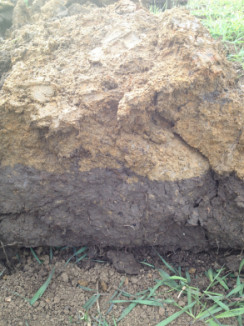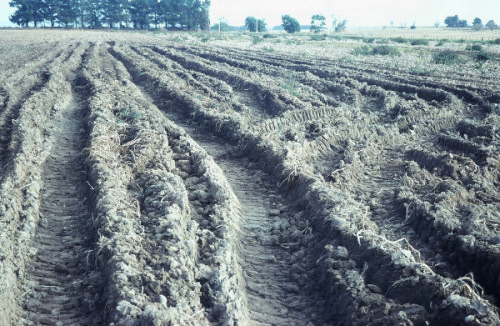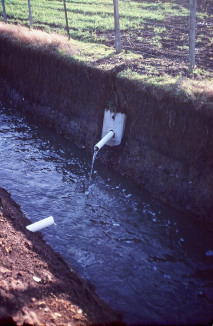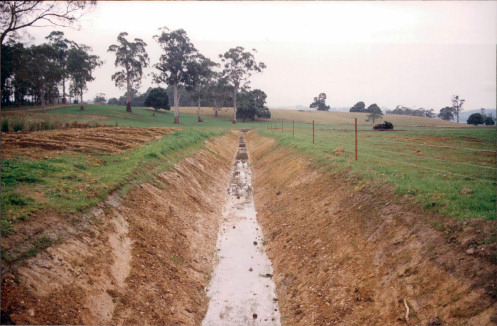|
|
 |
After care
Field drainage systems do not always provide a complete answer to the drainage problem.
Water movement in soil even after drainage often needs to be encouraged by supplementary treatments.
This may involve: Mechanical bursting by subsoiling or chisel ploughing etc repeated mole drainage.
Aftercare
Aftercare is the action that must be taken to avoid the recurrence of drainage problems.
It involves:
- Maintenance of the drainage systems
- Careful management associated with the best use of the land for the particular soil type.
The soil may need further subsoiling or moling to maintain permeability.
Soil structure
Soil structure is the manner in which the soil components such as sand and clay are arranged within the soil mass. These components adhere together by various natural processes to form larger units.
 
No structure The cause!!
A well developed structure allows the free movement of air and water throughout the soil and so any weakness in the structure may prevent the proper functioning of the drainage system.
Mechanical treatment
Layers of structural weakness in the profile can be recognised. The shallow ones are often due to mechanical compaction and can exist down to depths of 18in. often just below ploughing depth. These can be broken up by shallow subsoiling operations or by chisel ploughing. The type of implement used depends upon the depth of the problem and advice should be sought on the appropriate remedy.
Deeper structural problems are usually of natural origin and should have been taken care of as an integral part of the underdrainage system by deep subsoiling or moling, whichever was appropriate. These operations may need repeating from time to time and for success the moisture state of the subsoil is all important: moist and plastic for moling, hard and dry for subsoiling A lack of structure in the soil profile is often indicated by sharply defined boundaries between different layers. These may be boundaries of colour change, of texture change or of closeness of packing in the soil. Depth of rooting pattern are sometimes good indicators of these boundaries.

Fertiliser treatment
For full growth the plant must have an adequate supply of essential nutrients from the soil. When the drainage work is complete it is an appropriate time to consider the fertiliser programme. Lime is particularly important; this not only provides for the needs of the plant but also helps to maintain a good balanced soil health and structure.
Aftercare and good management
Difficult soils
Cropping should be planned to suit the soil type and season. On the more difficult soils, particularly those which unstable structure causes slaking, frequent damage in arable cropping makes the removal of excess water very difficult. These difficulties will be worse in areas of medium to high rainfall, where root crops are grown, and where arable cropping has led to low levels of soil organic matter. Saline prone areas are also difficult to crop for the same reasons.
Stock
Frequent causes of damage by stock to soil structure are:
- Poaching or treading of heavy land during wet periods or with too heavy stocking rates.
- Leaving cattle out too long at the end of the season to graze off a pasture.
- Strip grazing of winter forage crops by cattle on heavy land.
Maintenance of the drainage system
Attention must be paid to the maintenance needs of any drainage system if it is to function efficiently. Clear ditches are most important and blockages should be removed as quickly as possible. Too much stress can never be placed on the importance of giving early attention to the annual operation of keeping ditches clean, outfall pipes clear. We suggest a system of coloured marker pegs at the end of each outfall if possible to identify them for ease of maintenance and for operators to be able to find the end pipes rather than break them off.

Annual care
In addition to normal maintenance, some of the operations described may need to be repeated and it is worth while to examine the profile annually to ensure that the soil is maintaining a good condition, the future management of the land should continue to follow the practices suggested in order to prevent recurrence of drainage problems. Whilst this inspection is another task to do, it may save/make a large difference to the bank balance at the end of each rotation and it really does not take long to do and also keeps you in touch with your soils.
|
|
|